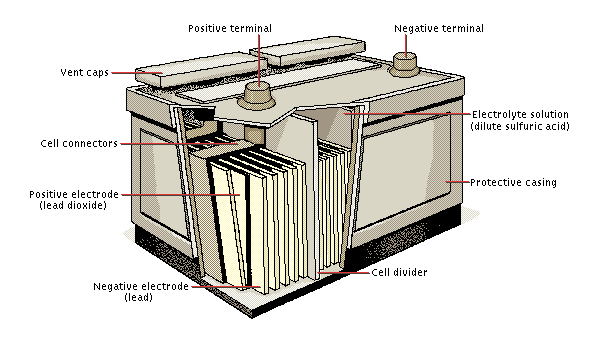|
|
|
Sneak Preview of a New Book Available In a few months |
|
|
||||||||||||||||||||||||||||||||
|
|
|
Wagonteamster |
|||||||||||||
 |
|||||||||||||
|
WAGONTEAMSTER .COM |
|||||||||||||
|
One of the nice things about a photovoltaic power system is that it is mostly maintenance-free. An exception that to would be lead acid storage batteries for an off the grid installation. Solar Panels If you read the manufacturers’ literature for their panels, they recommend that the panels be tilted at least 15 degrees. With this amount of tilt, normal rainfall will act to keep the panels fairly clean. If the panels are flat, like they would be on most non-stationary applications (like the wagon), then it’s necessary to occasional clean them with a gentle application of water and a soft rag. Having said that, I can also say that the 75 watt panel used for trips two and three (1 1/2 years long) was mounted flat, never was cleaned and had no appreciable change in power output. As the solar panels can trap and generate a lot of heat, I would inspect the wiring under the panels to ensure that the insulation doesn’t become discolored (at least at a couple of intervals after installation. Lead Acid Storage Batteries If you have an Off-the-Grid installation and use Lead Acid Batteries, these are probably the only devices that require any real maintenance. |
|||||||||||||
 |
|||||||||||||
|
Battery Theory To fully understand required maintenance, is necessary to have some understanding of how a battery works. Lead acid storage batteries are devices constructed of a number of cells. For example, the lead acid battery in most automobiles contains 6 individual cells (wired in series). Each cell is rated for 2 volts, so most car batteries are rated for 12 volts. A fully charged lead acid battery cell actually produces 2.1 to 2.2 volts DC. So, if you measure your car battery when your engine is not running, it should read between 12.6 and 13.2 volts DC. Individual cells are constructed of alternating positive (lead dioxide) and negative (lead) plates. The plates are immersed in a diluted solution of Sulfuric Acid in water. This solution is called the electrolyte. If the cell is fully charged, the electrolyte will be the most acidic, with a specific gravity slightly greater than 1.2. When an electrical load is placed across the positive and negative terminals, the external conduction path causes a chemical reaction to take place inside the battery. The chemical composition of both the positive and negative plates will change, as will the composition of the electrolyte, which becomes less acidic and more like water. While this process is occurring, the battery produces the electrons which flow through the external path of conduction. This process continues to take place as long as the battery has electrical load placed upon it, and it has the stored chemical ability to continue the process. When the battery has been discharged (either partially or fully) the process can be reversed by applying a DC voltage to the battery. Usually, this voltage will be between 2.2 and 2.3 volts per cell. This is what is called a “Float” charge and is what a charge controller will normally put out. For a 12 volt battery, this float charge is usually between 13.2 and 13.8 volts DC. If charging voltage were allowed to increase to a value of 2.3 to 2.4 volts per cell(13.8 to 14.4 volts for a 12 volt battery), this would be called an “Equalize” charge. We normally don’t operate in this region as it causes the water in the cells to disassociate into hydrogen and oxygen by a process called electrolysis. However, if water was added to the battery, or if the battery was severely discharged, some charge controllers will allow the battery to be “equalized” for a few hours to ensure the water and sulfuric acid are thoroughly mixed within the cells. The charge controller ensures the batteries are not overcharged by controlling the voltage going to the batteries. The rate at which they are recharged will be determined by the amount of charging current. If a 100 AH (amp hour) battery was discharged 50%, then it would require 50 amp hours of current for one hour(at rated float voltage) to bring it back to a full charge. If the solar panels were producing 10 amps of current, then it would take five hours for the battery to regain a full charge. When the battery was fully charged, the charge controller acts to limit the current going to the battery to prevent it from overcharging. Overcharging the battery allows the voltage to rise until it reaches the Equalize level of 2.3 to 2.4 volts per cell. While this voltage region can be good for small increments of time, extended operation at this level will cause the electrolyte level in the battery to steadily decrease as the water is converted to hydrogen and oxygen gas. Once the plates are no longer covered by the electrolyte, heat will cause them to warp, possibly shorting out to a plate to one of the opposite polarity. At that time, you’ll need to go out a get a new battery. Battery Maintenance The number one thing that an off-the-grid system owner must do is to periodically check the level of electrolyte in all the battery cells and add water as necessary. Always add only Distilled Water, as impurities in tap water will shorten the life of your batteries. Never let the water fall below the top of the metal plates (that are visible through the fill holes). Don’t get any electrolyte on you as it is highly acidic and can cause chemical burns. If it is spilled on your clothes, you won’t notice it until they are washed, after which you will have a lot of little holes in your clothes. Battery connections should be cleaned, greased and tightened at least once per year. Be extremely careful not to cause a short across the terminal, as this could cause a high energy arc flash and possibly blow up the battery. If cell voltage falls below 2.1 volts per cell on a fully charged battery; first try an equalize charge for 24 to 48 hours, If this doesn’t work, then it is probably time for a new battery.
Maintenance of Other Components Most of the other components in a Photovoltaic System require little of no maintenance. At least annually, I would walk the system down and ensure there is not discolored insulation or any other signs of excessive heat. Having an electrician inspect the system would be a good idea. |
|||||||||||||


